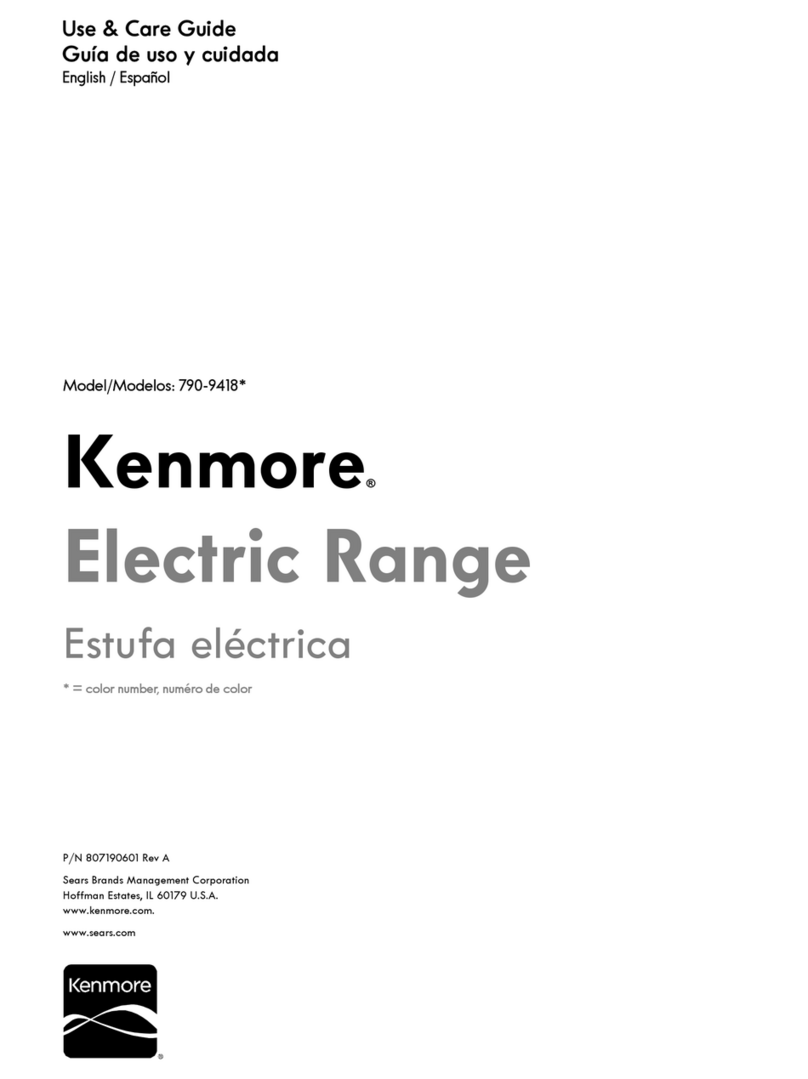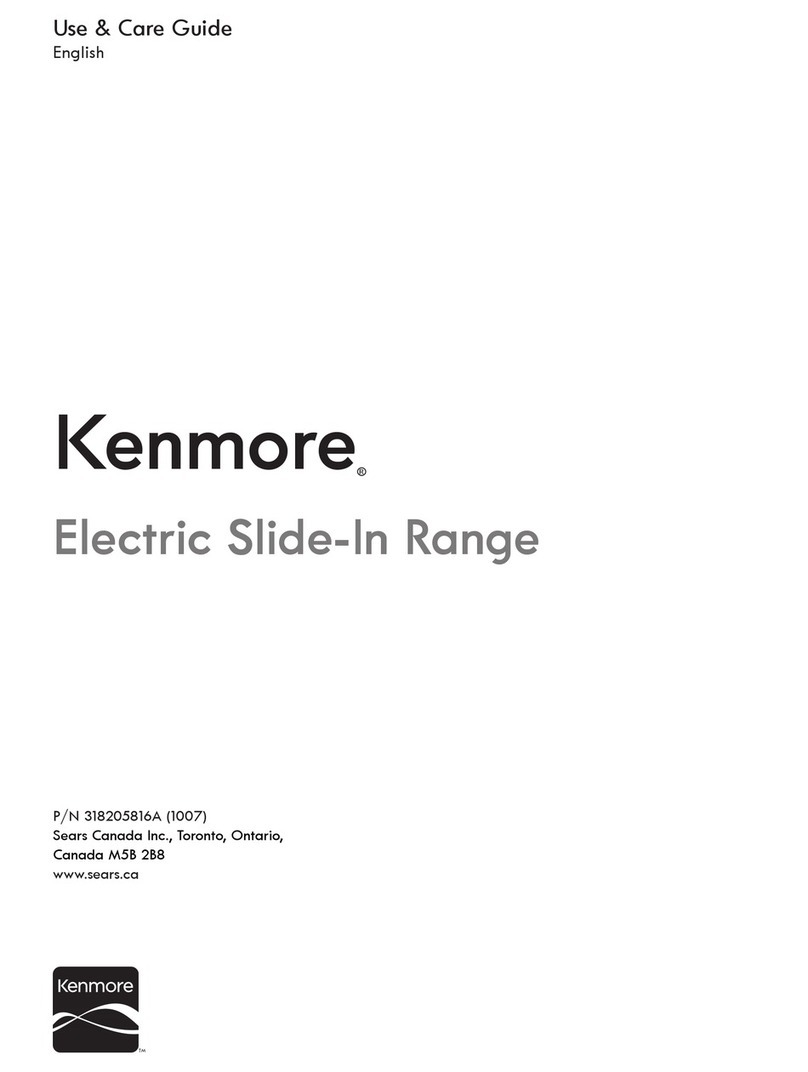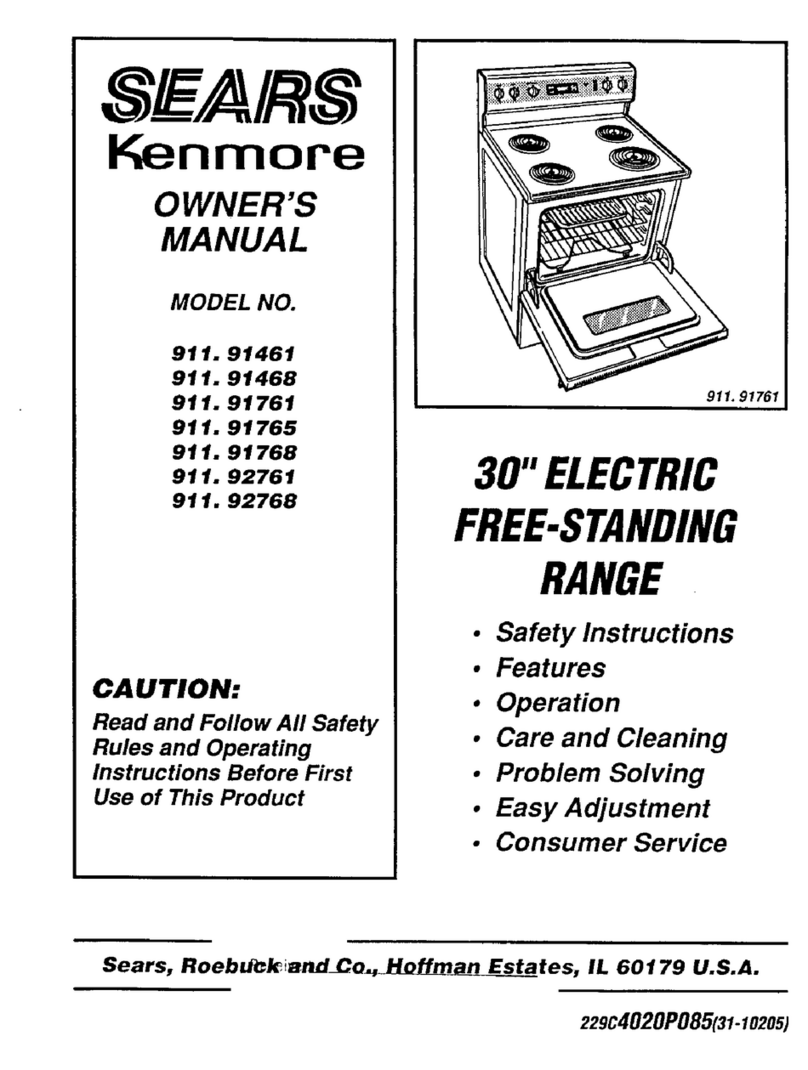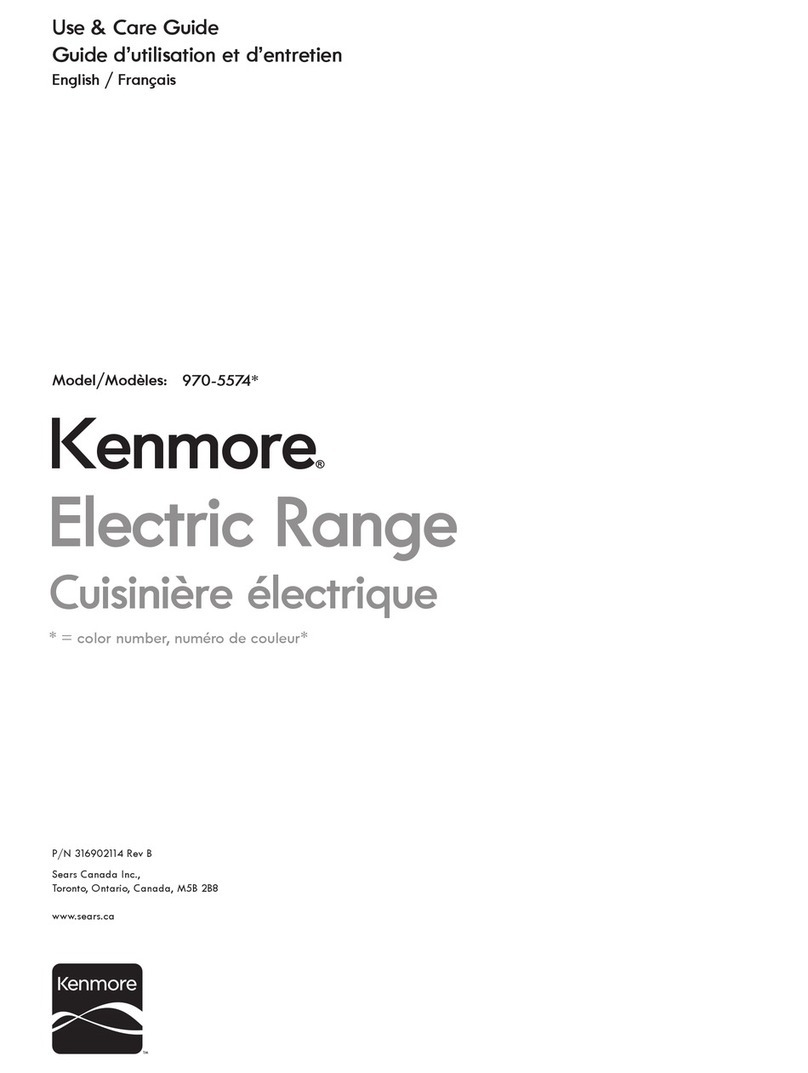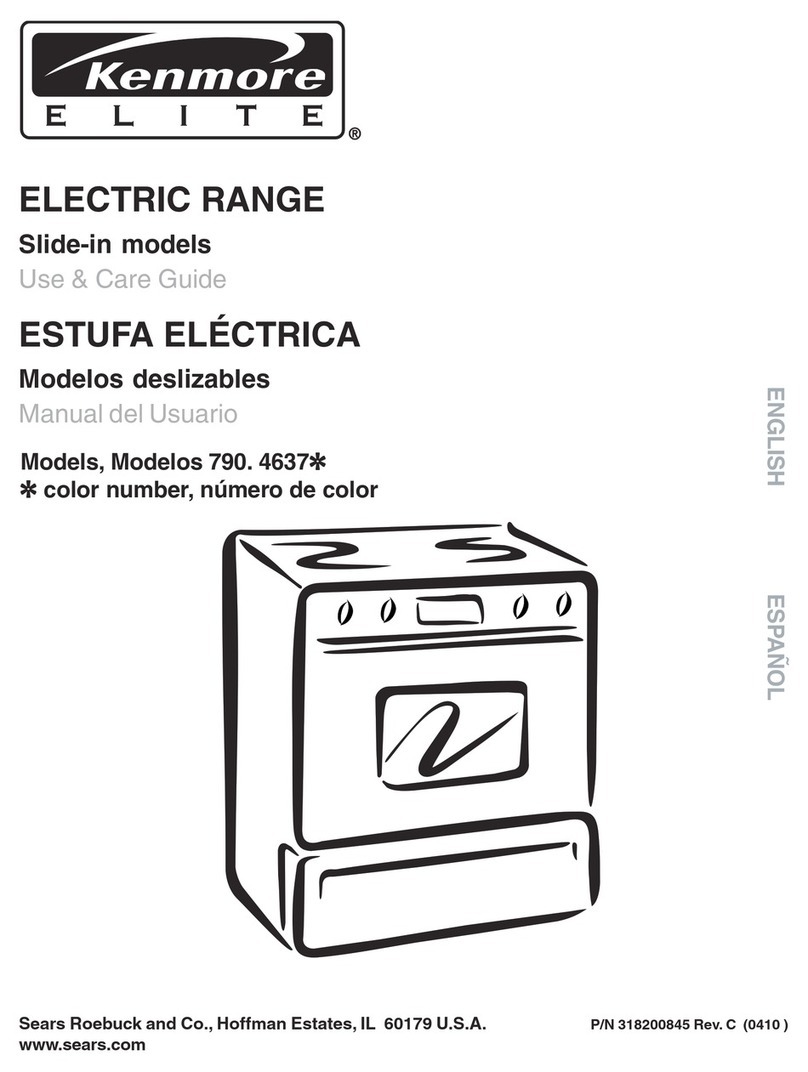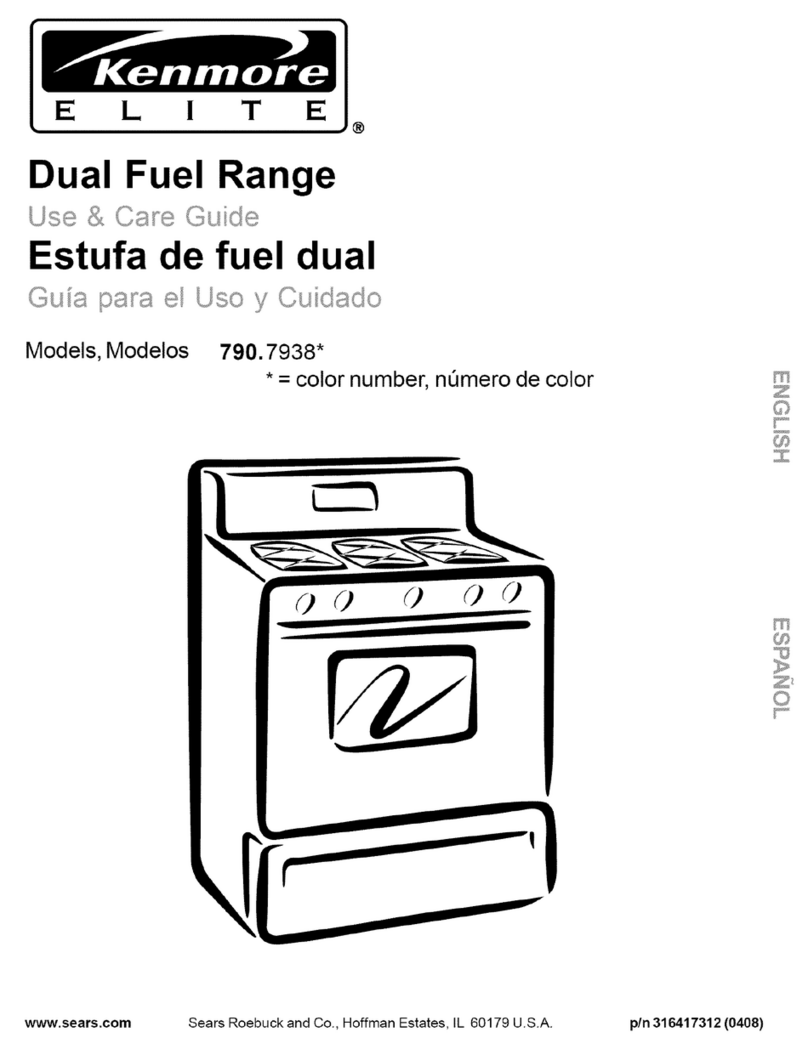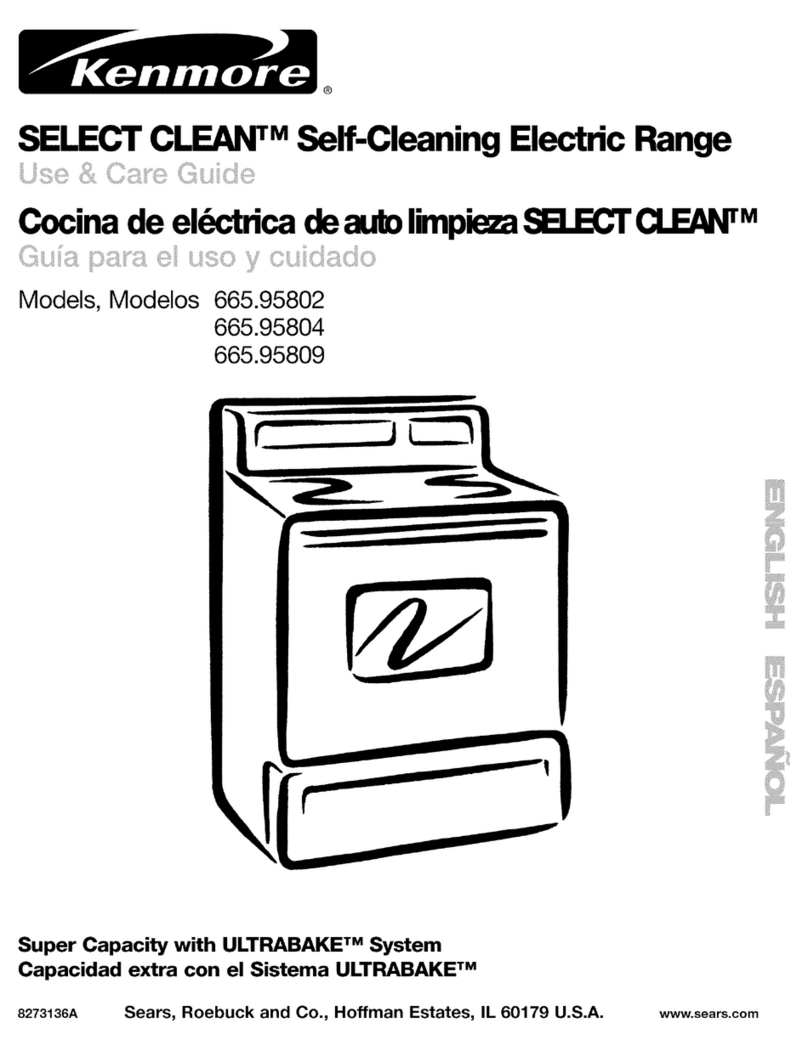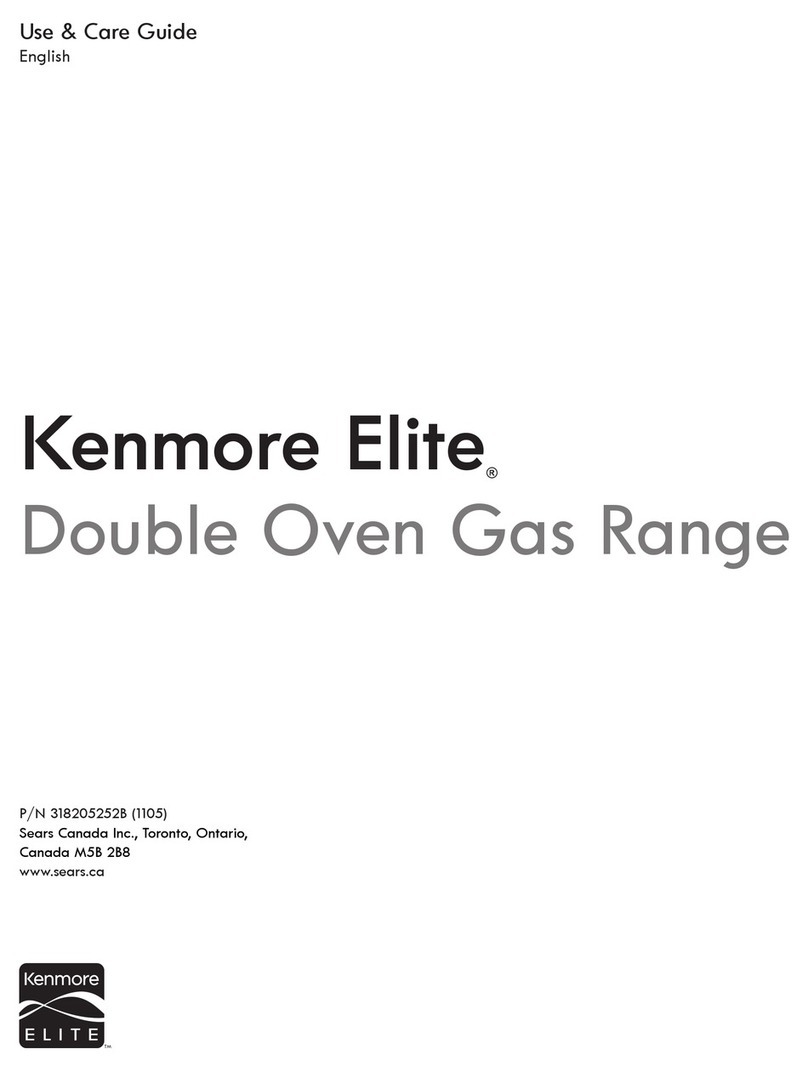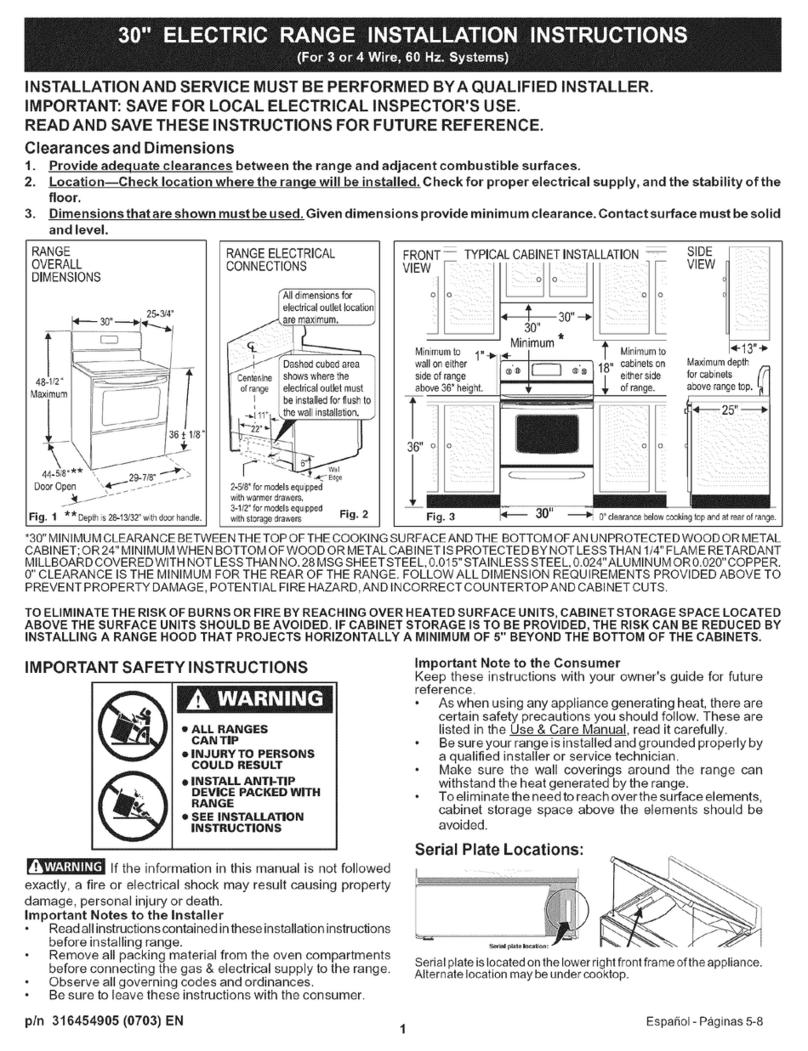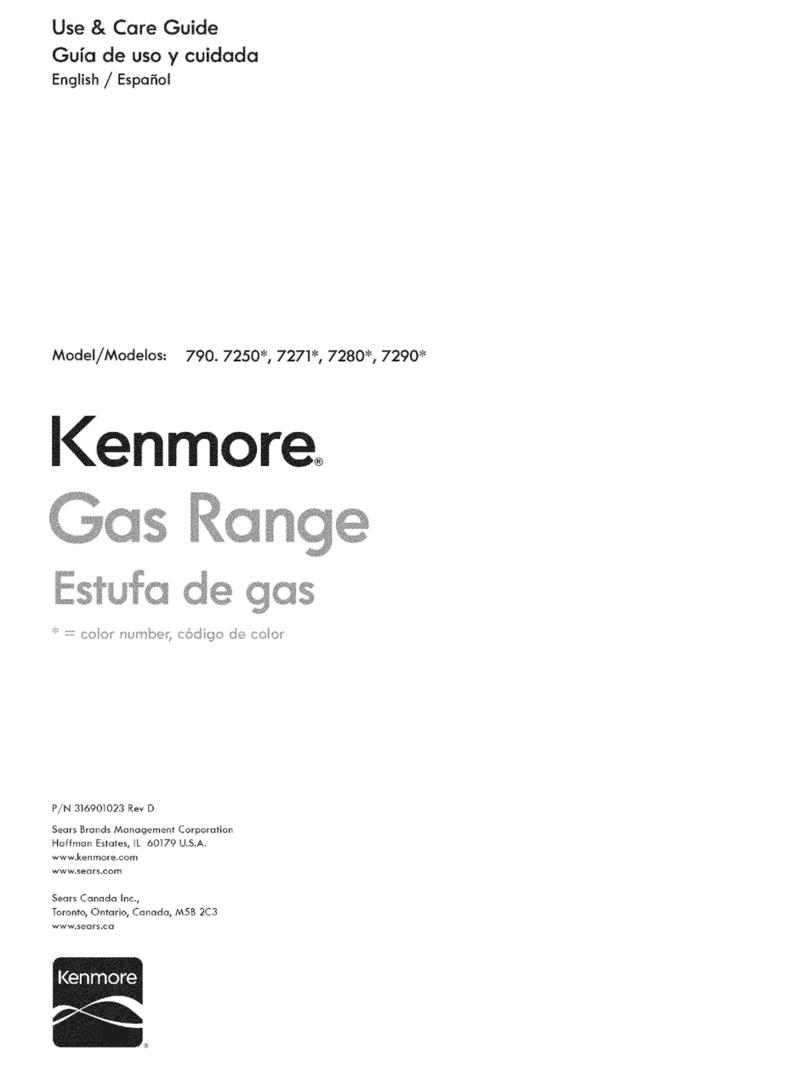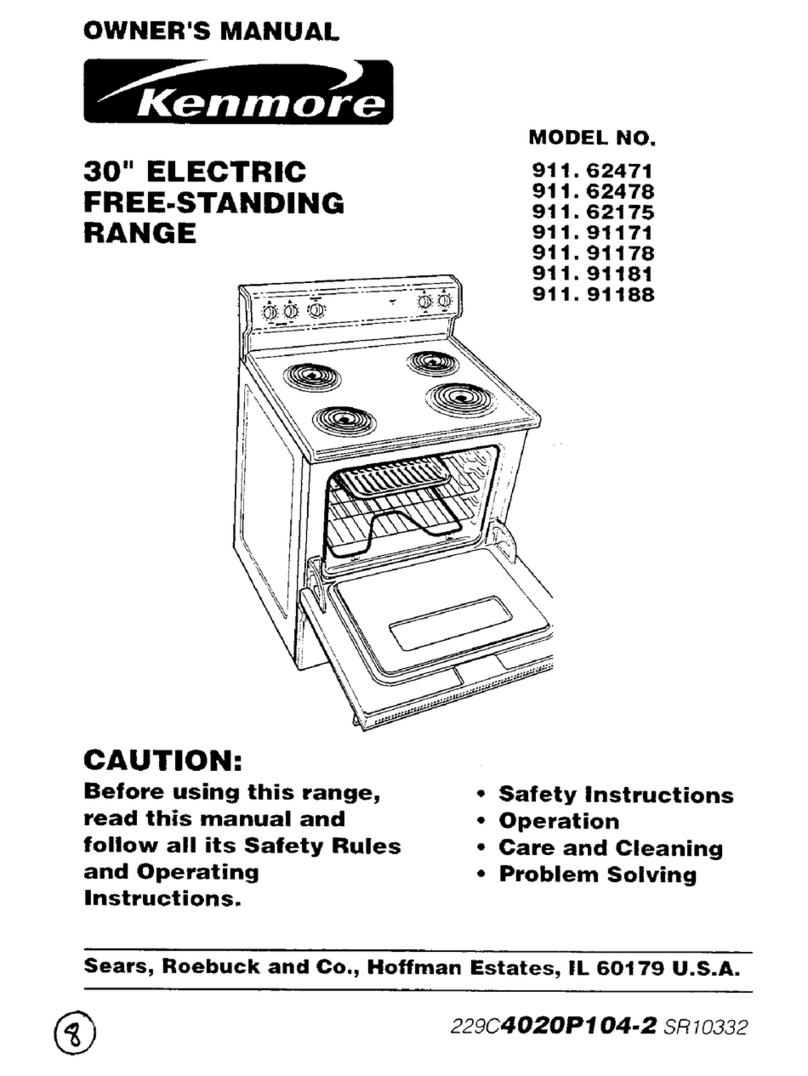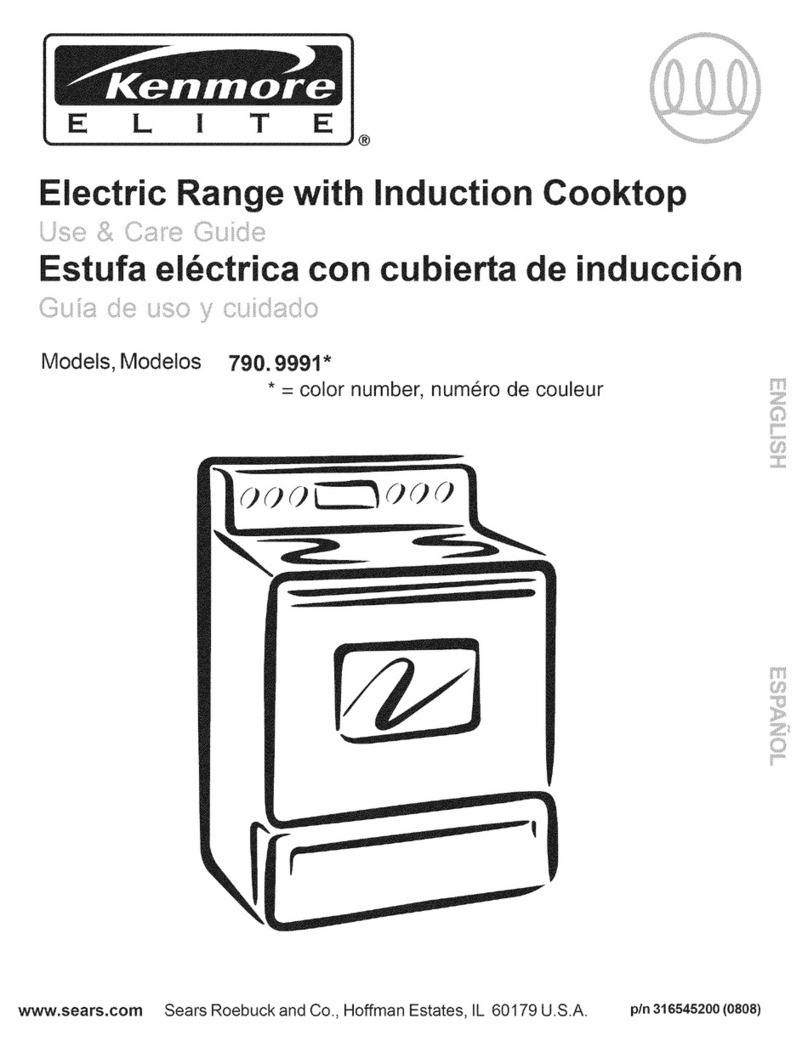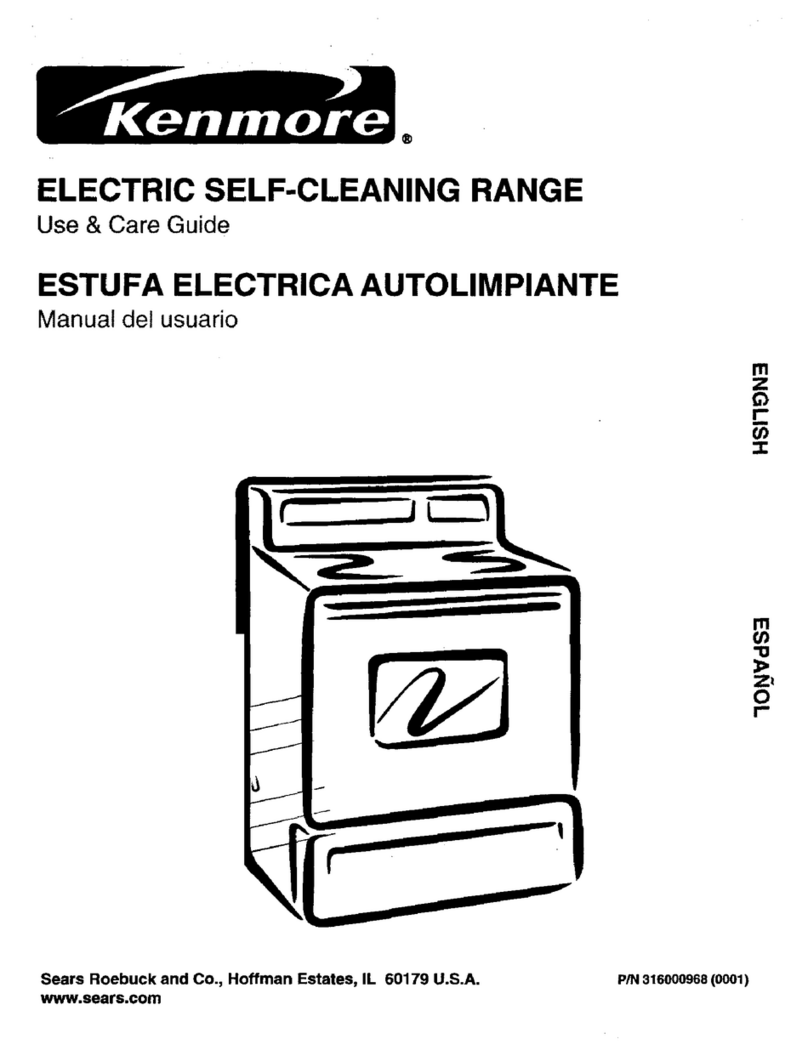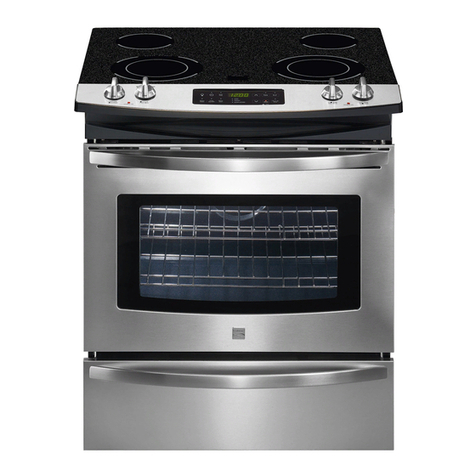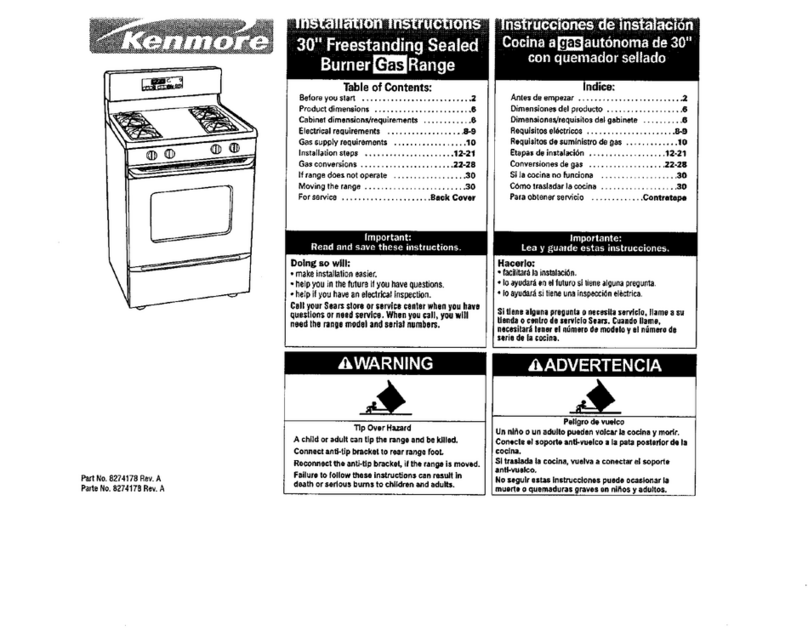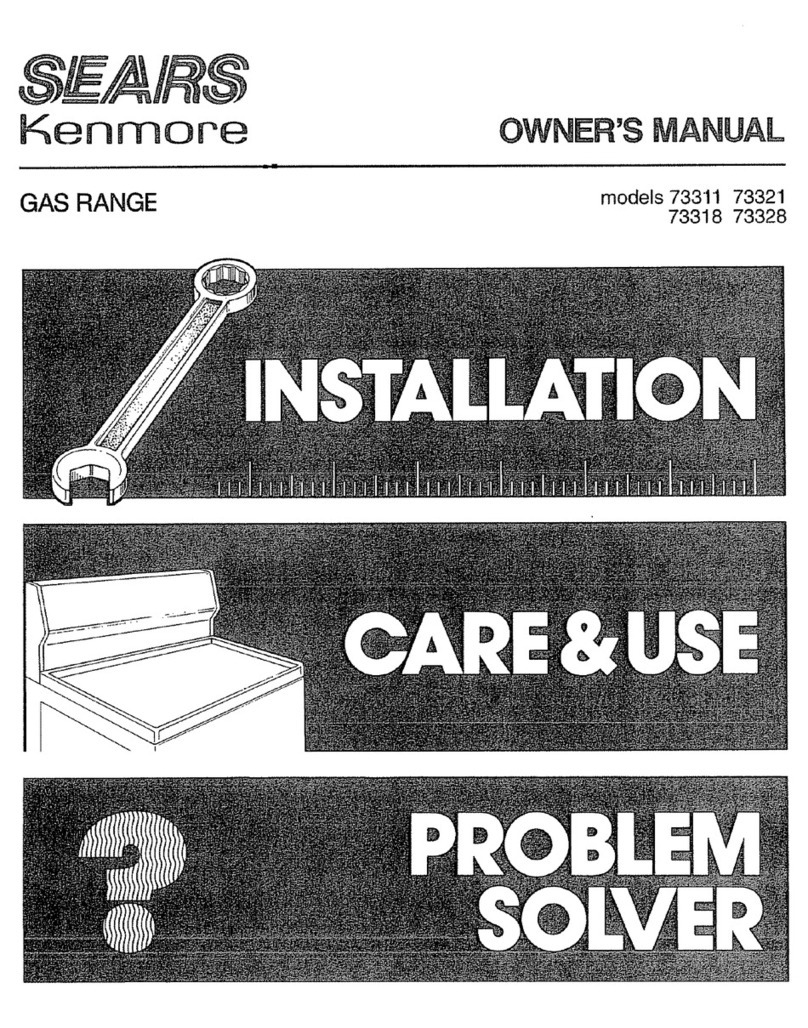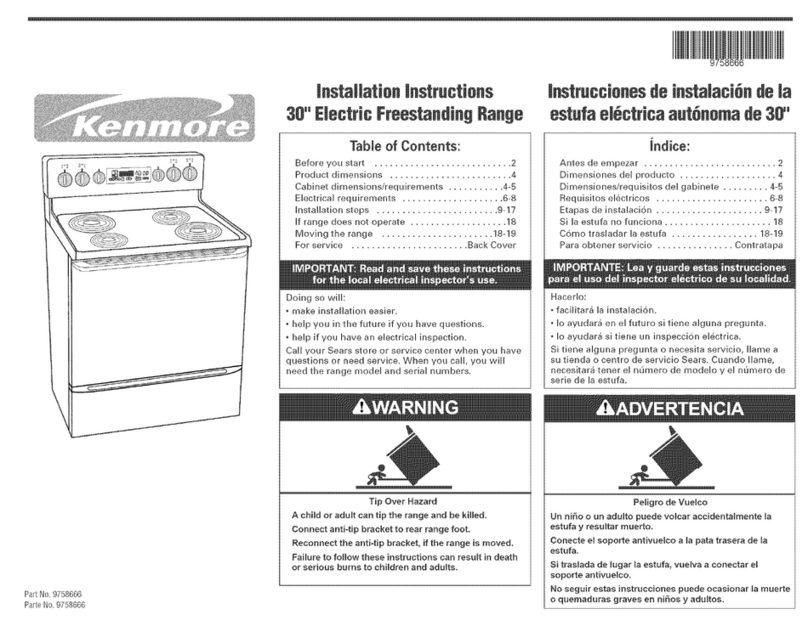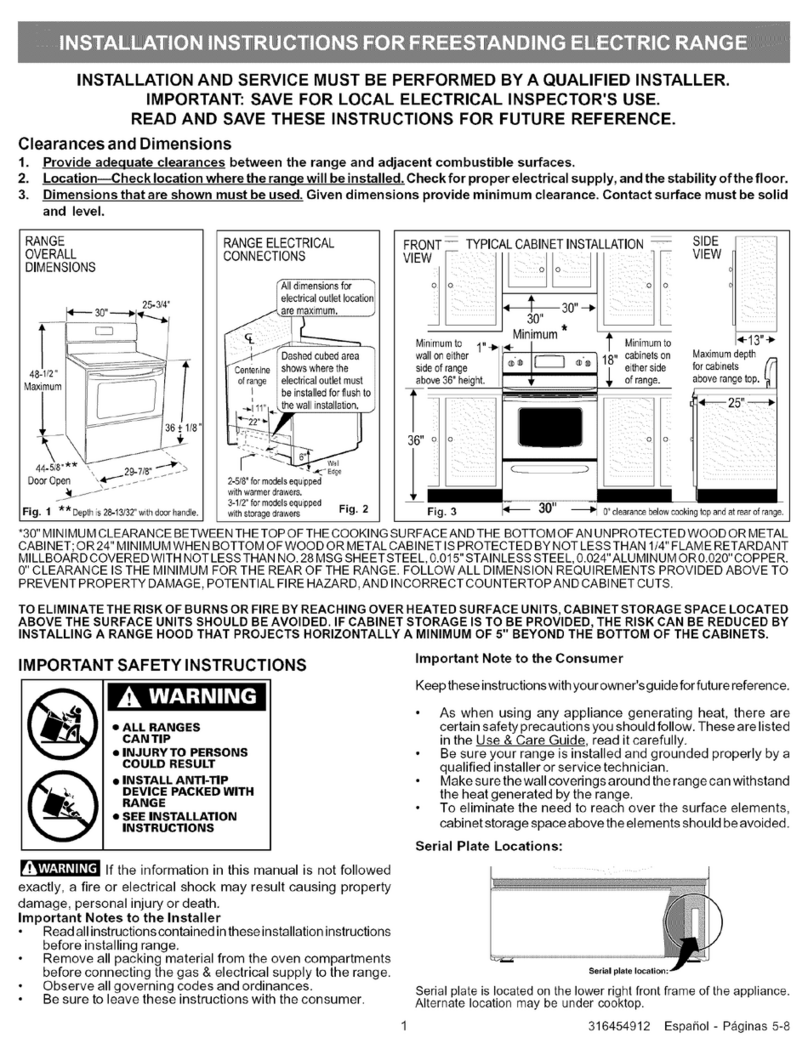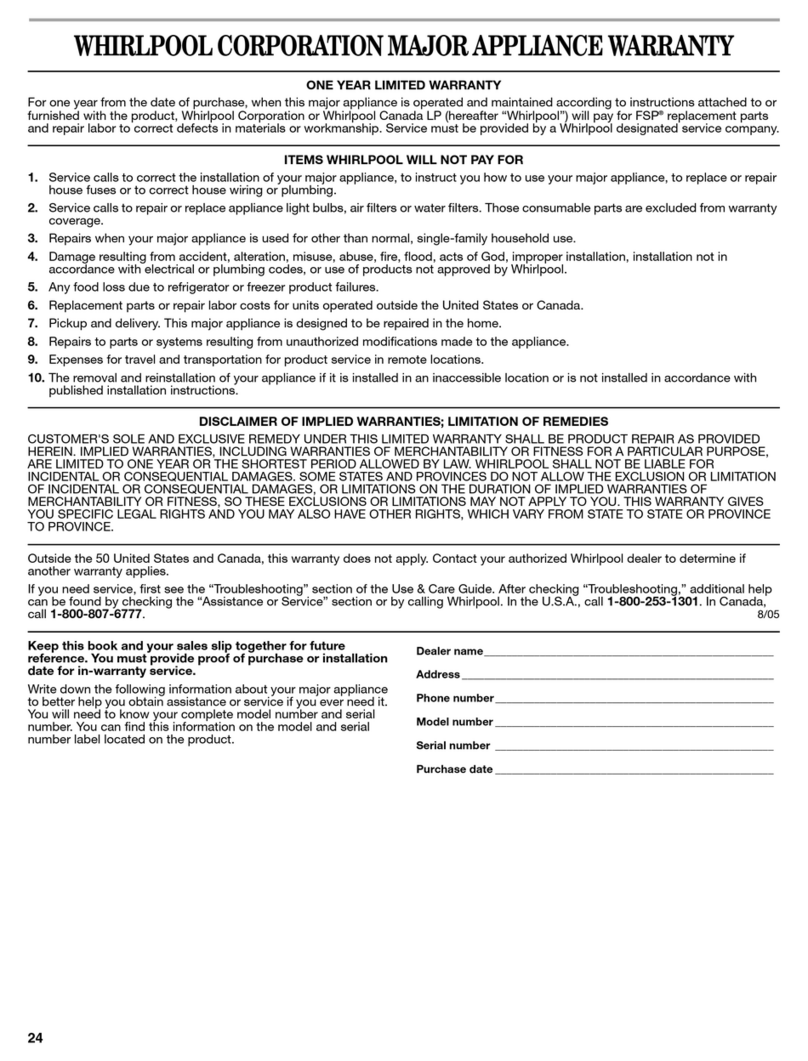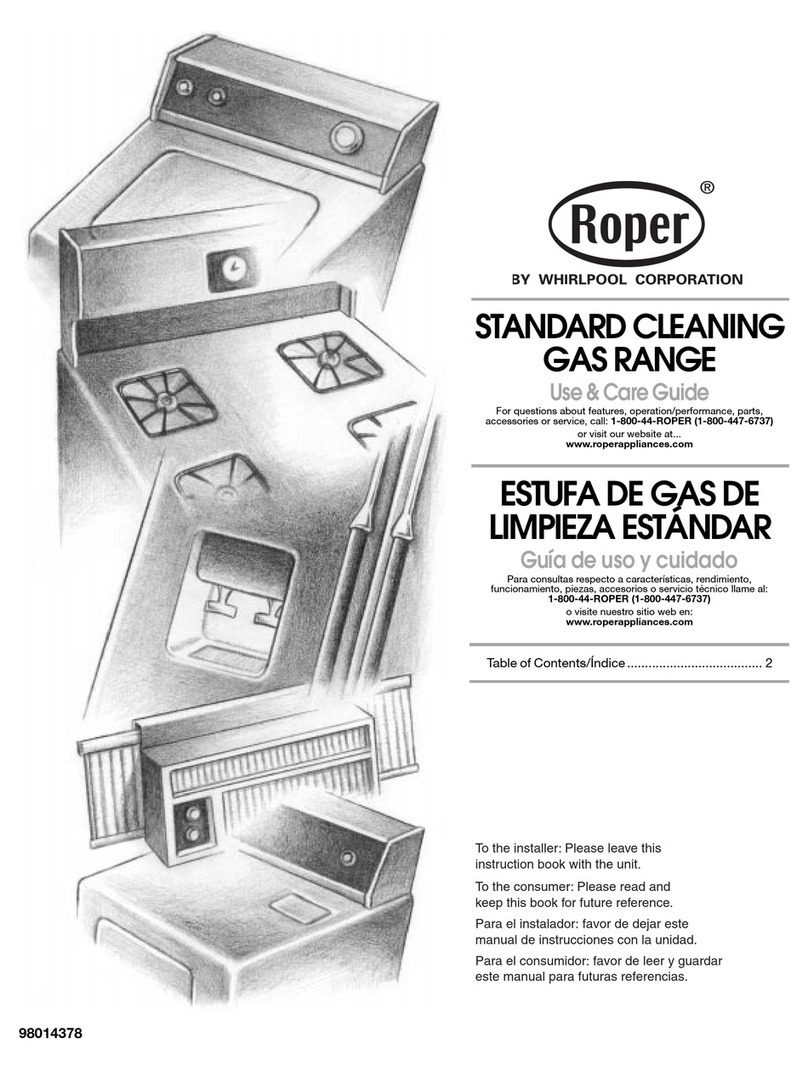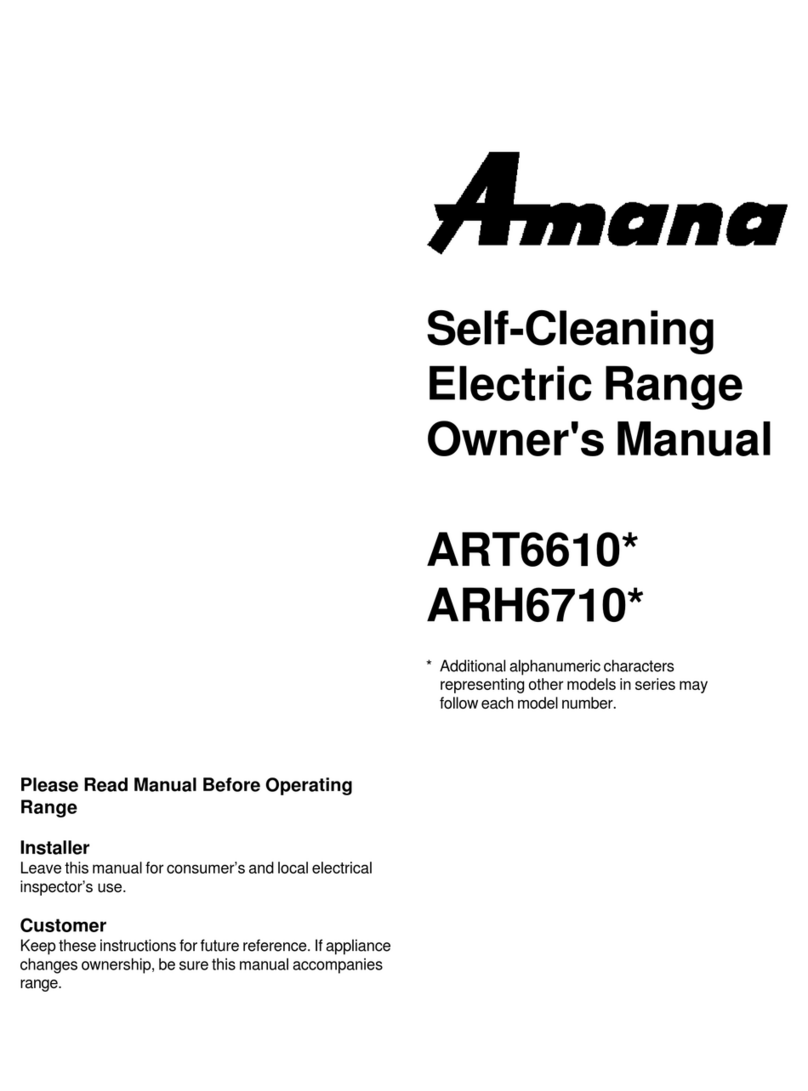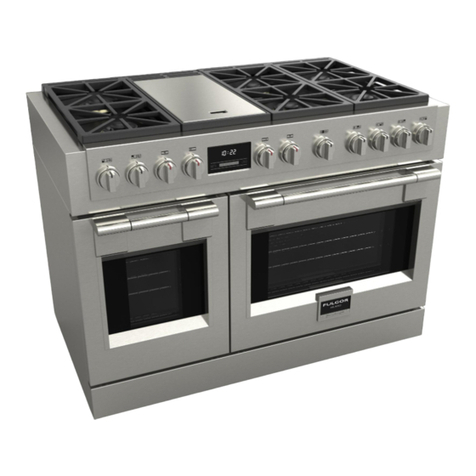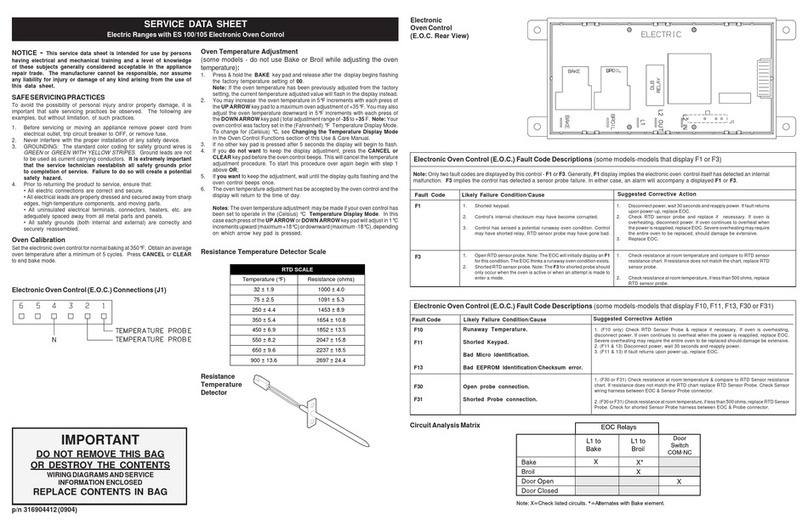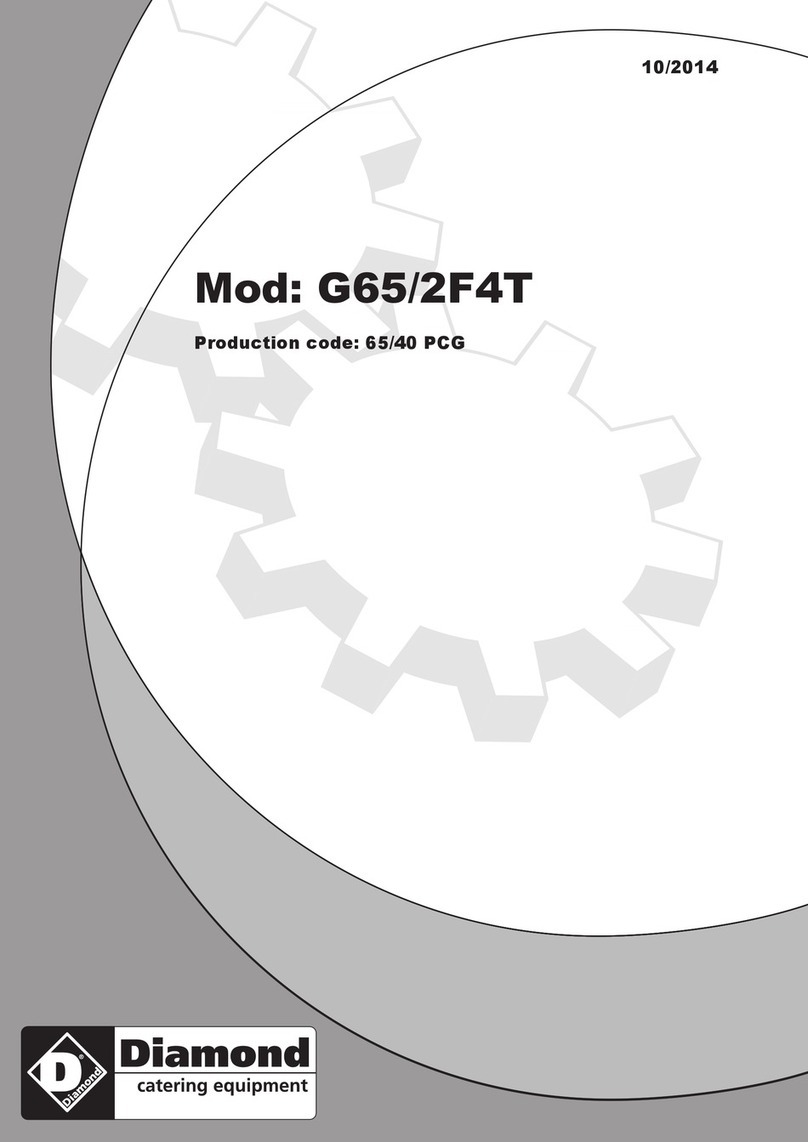
4Safety
•Removealltapeandpackagingbeforeusing
the range. Destroy the carton and plastic bags
afterunpackingtherange.Neverallowchildren
to play with packaging material.
•ProperInstallation—Besureyourapplianceis
properlyinstalledandgroundedbyaqualified
technicianinaccordancewiththeNational
Fuel Gas Code ANSI Z223- latest edition, or in
Canada CAN/CGA B149.1 and CAN/GGA
B149.2, andthe NationalElectrical Code
ANSI/NFPA No.70-latest edition, or in Canada
CSAStandardC22.1,CanadianElectrical
Code, Part 1, and local code requirements.
Installonlyper installation instructions provided
in the literature package for this range.
Ask your dealer to recommend a qualified
technicianand an authorizedrepair service.
Knowhow to disconnect thepower to therange
at the circuit breaker or fuse box in case of an
emergency.
•Userservicing—Donot repairorreplace any
partoftheapplianceunlessspecifically
recommendedinthe manuals. Allother
servicing should be done only by a qualified
technician. This may reduce the risk of personal
injury and damage to the range.
•Never modify or alter the construction of a
rangebyremoving levelinglegs,panels,wire
covers,anti-tipbrackets/screws,oranyother
part of the product.
•Air curtain or other overhead range hoods,
which operate by blowing a downward air
flow on to a range, shall not be used in
conjunction with gas ranges other than when
the hood and range have been designed,
tested and listed by an independent test
laboratory for use in combination with each
other.
•StorageinoronAppliance—Flammable
materials should not be stored in an oven,
warmer drawer, near surface burners or in the
storage drawer. This includes paper, plastic
and cloth items, such as cookbooks,
plasticware and towels, as well as flammable
liquids. Do not store explosives, such as aerosol
cans, on or near the range.
•Remove the oven door from any unused
range if it is to be stored or discarded.
Important safety instructions
•Donotleavechildrenalone—Childrenshould
not be left alone or unattended in the area
where appliance is in use. Theyshouldnever
be allowed to sit or stand on any part of the
appliance.
•DO NOT TOUCH SURFACE BURNERS,
AREASNEARTHESEBURNERS,OVEN
BURNERSORINTERIORSURFACESOFTHE
OVEN. Both surface and oven burners may be
hot even though flames are not visible. Areas
nearsurfaceburnersmaybecome hot enough to
cause burns. During and after use, do not touch,
orletclothingorotherflammablematerials touch
these areas until they have had sufficient time to
cool. Among these areas are the cook top,
surfaces facing the cook top, the oven vent
openings and surfaces near these openings,
ovendoorand window.
•Wearproperapparel—Loose-fittingor
hanging garments should never be worn
whileusing the appliance. Donotletclothingor
otherflammablematerials contacthotsurfaces.
•Do not use water or flour on grease fires—
Smother the fire with a pan lid, or use baking
soda,a drychemical orfoam-type
extinguisher.
•When heating fat or grease, watch it closely.
Fat or grease may catch fire if allowed to
becometoohot.
•Use only dry potholders - Moist or damp
potholders on hot surfaces may result in
burns from steam. Do not let potholders touch
hot heating elements. Do not use a towel or other
bulky cloth instead of a potholder.
•Do not heat unopened food containers -
Buildupofpressure may cause container to
burst and result in injury.
Do not attempt to operate the range during a
power failure. If the power fails, always turn off
the range. If the range is not turned off and the
power resumes, the range will begin to operate
again. Once the power resumes, reset the clock
andovenfunction.
IMPORTANT
